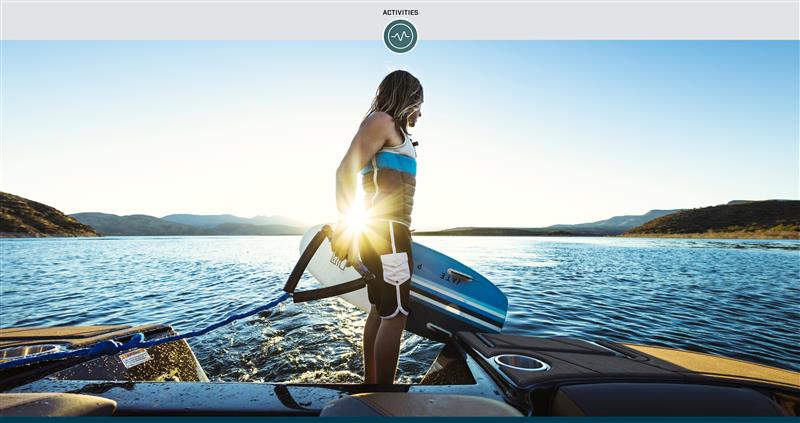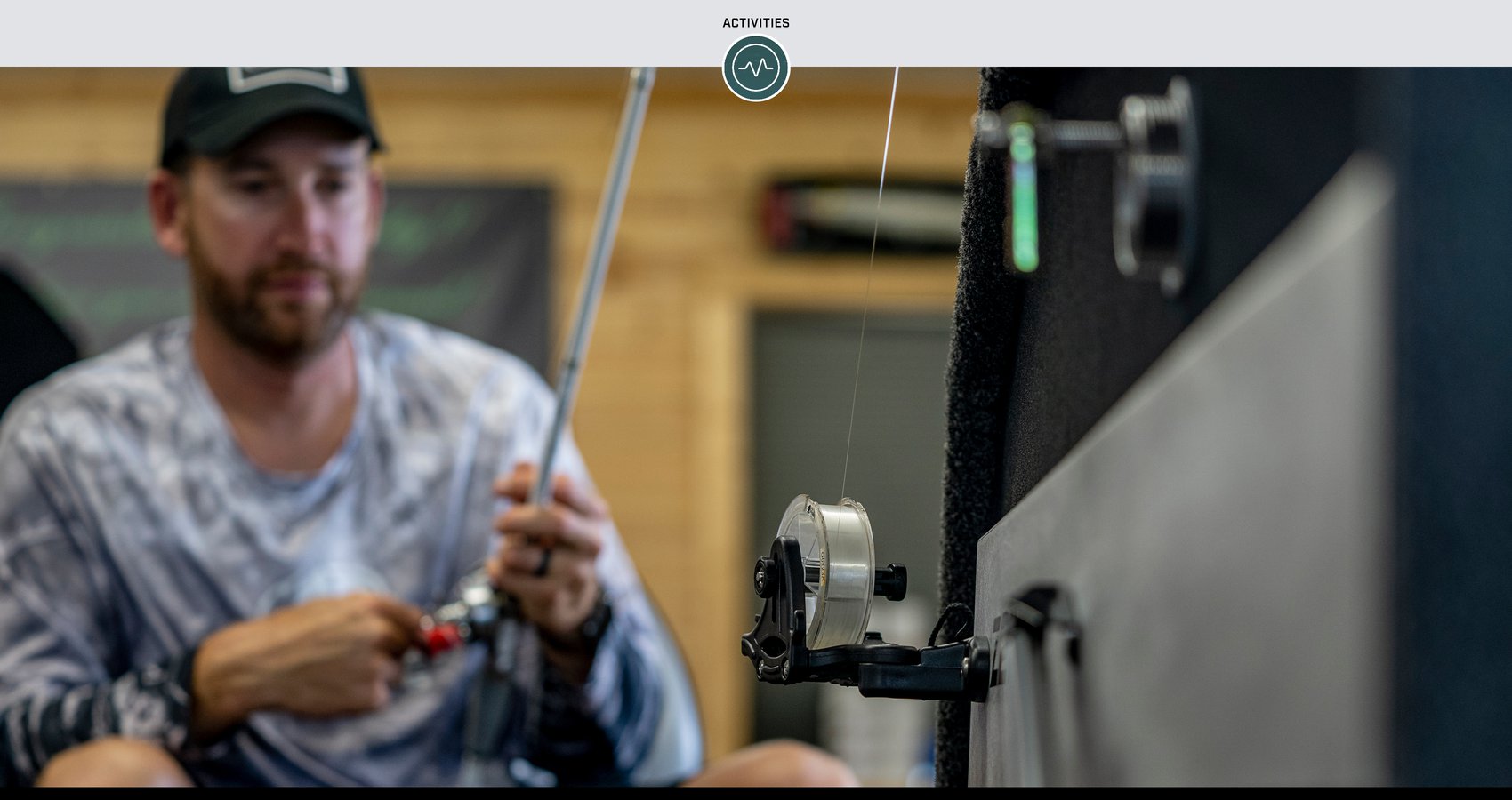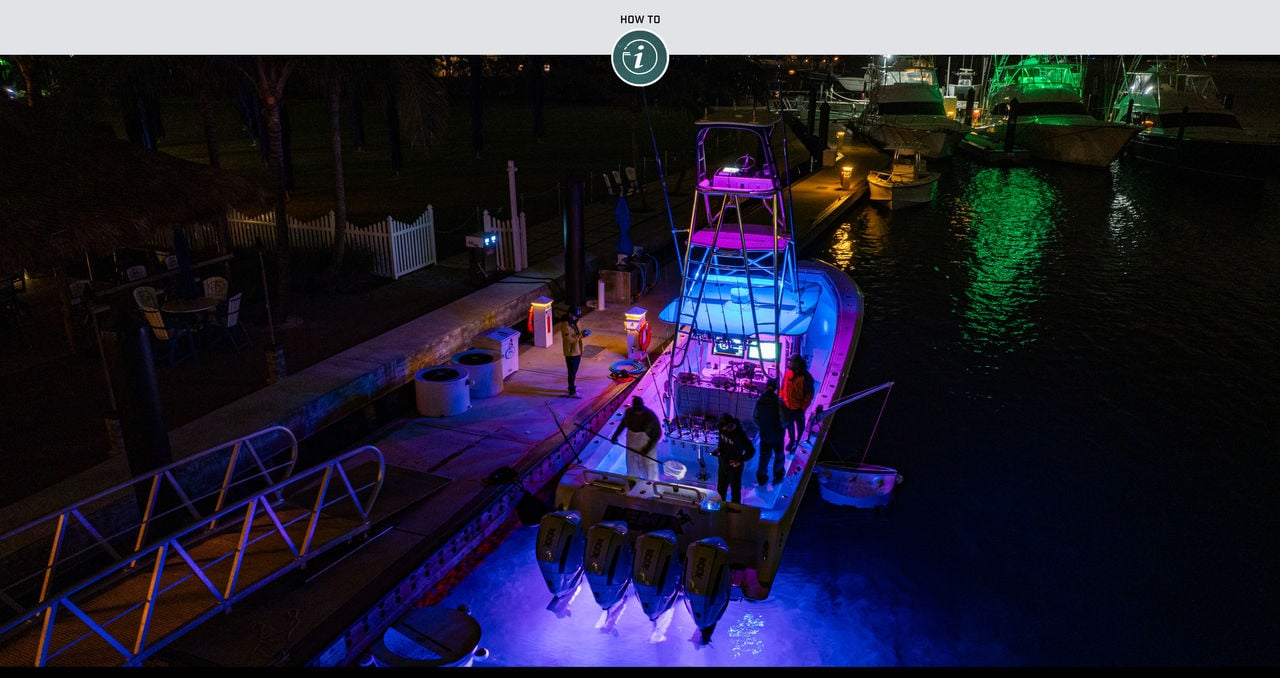If you enjoy boating at night or spending an evening on board at the dock or in the marina, upfitting your boat with underwater lights can add a whole new dimension to your experience. You can use them to light up the water behind your hull, enhancing both visibility and safety, as well as creating a beautiful visual effect. Some of today’s sophisticated underwater lighting systems even let you scroll through a palette of colors or create a light show that is synchronized to your music playlist.
Underwater lights designed to be mounted to a boat’s hull below the waterline were introduced to the recreational boating industry in the early 1990s. At first, halogen bulbs were used in many of these lighting fixtures, but by the mid-2000s, LED (Light-Emitting-Diode) technology began taking over and is now the industry standard – not only for underwater lights, but also for navigation and interior lighting. LED lights offer many benefits over halogen. They are much cooler, last far longer and are much more efficient, drawing up to 80 percent less energy from your boat’s battery to produce the same amount of brightness. They also have built-in reverse-polarity protection for added safety.
Marine underwater lights have grown in popularity to the point where today, many major boat manufacturers offer them as standard or optional equipment on their new models. But boaters also can purchase them as aftermarket accessories from a wide variety of vendors.
How to choose underwater lights
There are underwater light packages available for every boat from pontoon to superyacht and for every budget from under $100 to many thousands of dollars. In selecting the lights that will be best for your boat, a good place to start is by deciding which color or colors you would like to shine into the water. Blue, green or white are the most affordable options. Blue is among the most popular colors for underwater lights due to its peaceful ambiance and the fact that it travels farthest in salt water. However, it’s important to note that blue underwater lights are illegal in some areas as they may accidentally imitate the lights of law enforcement vehicles.
Underwater lights also come in varying degrees of brightness, measured in lumens. They have different beamwidths, ranging from narrow to wide flood (greater than 90°). The wider the beam, the fewer lights you will need to throw light behind your boat’s transom.
If you want your underwater lighting system to fade and brighten, strobe or emit multiple hues, you will need an RGB LED light controller, adding to the expense of the overall package. The benefits can be well worth the extra cost, however. Some systems allow you to strobe a single color, rotate between colors, fade from one color to the next, and even sync the colors to your music playlist via a remote control. A bluetooth-enabled underwater lighting system even lets you do all this from your smartphone.
Are they difficult to install?
Most marine underwater lights are installed in a boat’s transom below the waterline, in an area where the light fixture will not cause drag or turbulence when the boat is coming onto plane. Larger boats typically have thru-hole style underwater lights that require drilling a circular hole in the transom. They also can come with complicated electrical wiring, particularly if an LED light controller unit and/or a wireless receiver is part of the package.
For boat owners who are used to performing DIY projects on their vessels, manufacturers report that it is relatively simple and straightforward to install underwater lights yourself. However, if you don’t have much experience or are understandably reluctant to drilling holes in your hull, we recommend hiring a certified marine technician to do the job.
While thru-hull underwater lights typically are brightest and offer the widest range of high-tech lighting options, there are other options to consider that don’t require performing “major surgery” on your boat. Surface-mount underwater lights only require drilling small holes in the hull for the power cord and screws to hold the unti in place. These can be mounted on the transom and/or along the hull sides beneath the waterline, creating a whole lighting array. In addition, some surface lights are designed to mount on the trim tabs rather than the boat itself. In addition, you can find “No-drill” lights on the market that screw into already-existing holes in your hull such as the drain plug.
What you need to know
Like most of the components on your boat, it is crucial to choose underwater lighting products that are designed and tested for prolonged use in the harsh marine environment. Depending on whether you use your boat in salt or fresh water, be sure to select underwater lights with a marine-grade housing that will not rust or corrode over time. The IP (Ingress Protection) rating on the light also will help you to assess how waterproof and leak-resistant it will be. Marine underwater light manufacturers typically build their products to a rating of at least IP67 or IP68, which means the unit has been tested to be air-tight and protected from prolonged submersion.
In selecting the location for your boat’s underwater lights, be sure they are not positioned where another boater might mistake them for your navigation lights. According to U.S. Coast Guard Safety Alert 10-15:
“Boaters should be concerned about installing ‘decorative’ lighting on their boats in various places, including underwater, on the rubrail, or just above the waterline. Care must be taken that these lights:
· cannot be mistaken for navigation lights,
· cannot impair the visibility or distinctive character of approved and properly placed navigation lights, and
· do not interfere with the operator’s ability to maintain a proper lookout.”
Once your underwater lights are installed, it’s important to be aware they are there when you are driving the boat and protect them from accidental impacts with submerged objects or the bottom.
Underwater lights require a certain amount of maintenance during the year. Even if you use your boat in fresh water, it’s important to clean them regularly to remove grime and algae; something that’s very easy to do if you have a trailerable boat. Use a mild cleaning solution on a soft cloth or sponge to wipe them down, as abrasive or harsh chemical products could damage the lens.
Get into the habit of inspecting your underwater lights periodically. Check for signs of water leakage, particularly inside the light, which could signal the presence of faulty sealant or bad wiring. If possible, inspect the wiring connections to make sure they are secure and corrosion-free and replace any that may be damaged.
If you keep your boat out of the water for an extended period, such as during winter storage, consider removing surface-mounted or drill-free lights and keep them in a dry indoor location until it’s time to get back on the water.
Many boaters consider underwater lights as important to their enjoyment of their boat as the onboard entertainment system. As the sun sets, drop the anchor in a quiet cove, switch on the lights and music, and create your own unique blend of light and sound.



